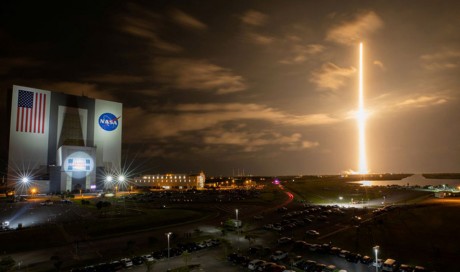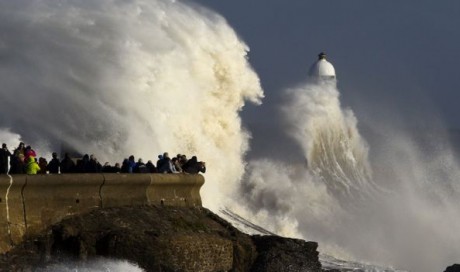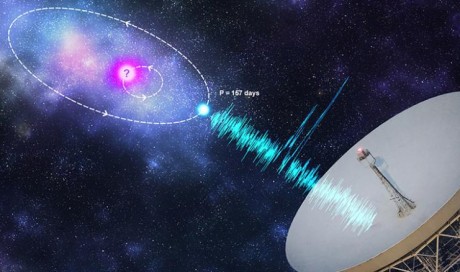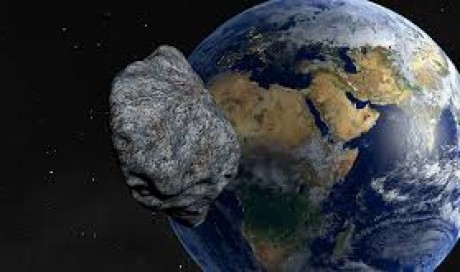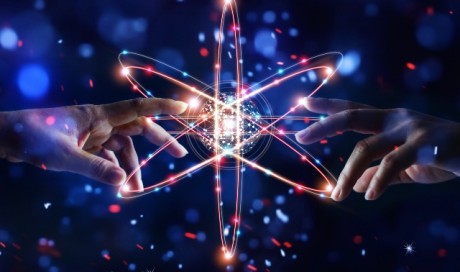"This new burp is actually moving like a shockwave that is coming out very fast," said Dr Comerford.
"I thought of an analogy for this and I was debating whether to use it or whether it's a little too gross... imagine someone eating dinner at their kitchen table and they're eating and burping, eating and burping.
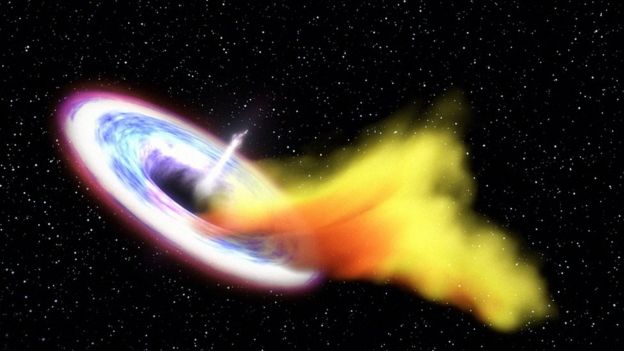
Image captionArtwork showing a black hole consuming nearby matter
"You walk in the room and you notice there's an old burp still hanging in the air from the appetiser course. Meanwhile, they're eating the main course and they let out a new burp that's rocking the kitchen table."
She said the black hole was going through a cycle of feasting, burping and napping, before starting over.
The observations are important because they support previous theories - not demonstrated until now - that black holes should go through these cycles. The black holes were expected to become very bright in the process of feasting and burping and then go dark during the nap phase.
"Theory predicted that black holes should flicker on and off very quickly and this galaxy's evidence of black holes does flicker on timescales of 100,000 years - which is long in human timescales, but in cosmological timescales is very fast," said Julie Comerford.
The researchers think the black hole erupted twice because it consumed two separate meals. The reason for this might lie with the fact that the galaxy it's in had collided with another galaxy nearby. This would provide plenty of cosmic gas on which a black hole could feast.
"There's a stream of stars and gas connecting these two galaxies. That collision led gas to stream towards the supermassive black hole and feed it two separate meals that led to these two separate burps," said the University of Colorado researcher.
The results are published in the Astrophysical Journal.
Share This Post

